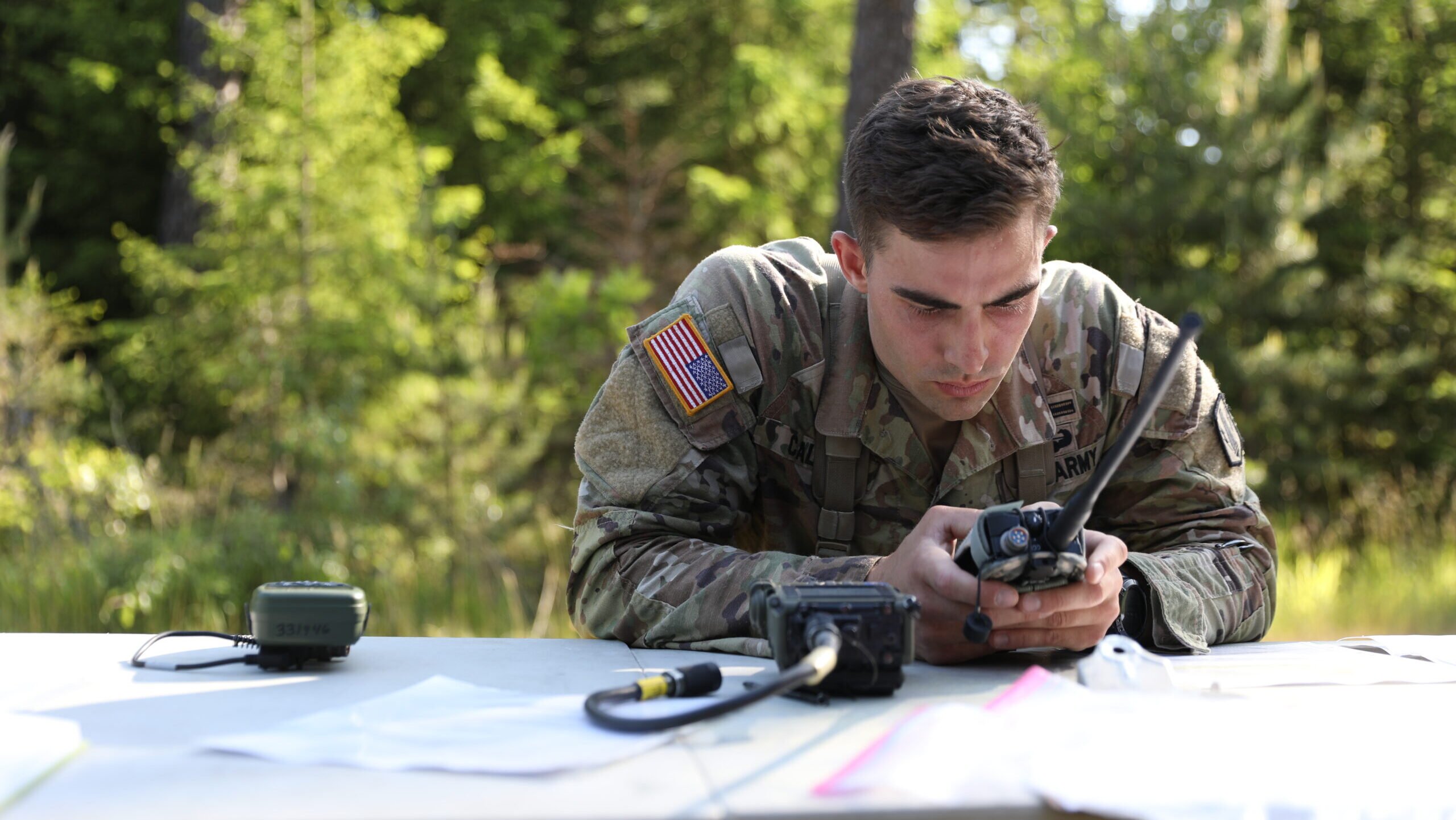THERESA HITCHENS

The Space Development Agency is now working with the Army to explore new options for satellite-based positioning, navigation and timing (PNT) as alternatives to GPS, according to SDA Director Derek Tournear.
“We’re working very closely with the Army, who’s been pioneering the alt-PNT across the Department of Defense,” he told the National Security Space Association today. “We’re working with them to be able to broadcast that same signal so it can be picked up by by existing, fielded and planned user equipment.”
He explained that the Army has an alternate PNT (alt-PNT) signal that still can be picked up by the Military GPS User Equipment (MGUE) Increment 2 radio chip sets — which primarily are being developed to allow access to the GPS constellation’s jam-resistant M-Code signal. That effort, however, is “a little ways in the future,” he said, only starting once SDA has launched its third iteration, confusingly called Tranche 2, of Transport Layer satellites to low Earth orbit to provide high-speed data relay around the globe. SDA plans to begin launching those birds in 2026.
The military is pursuing alternate PNT tech with the assumption that in a future conflict, units may be operating in environments where GPS is naturally not accessible or is being jammed by the adversary.
Tournear said that meanwhile SDA next year will begin launching the Tranche 1 Transport Layer satellites for regional communications, which also will carry a “navigation message” embedded in their venerable Link 16 data links.
“Link 16 has been around for that since the 80s, right, before GPS was was used in combat. Link 16 is what we were going to use for our navigation and timing during that time before GPS. It still has that capability. You can embed a navigation and timing signal into Link 16 and you can use it for that. It’s not nearly as good as GPS, but it does give you an alternate. And we calculate our own position navigation and timing onboard our satellite satellites independent of GPS just by doing timing transfer between the satellites,” he elaborated.
Link 16 is the standard data transmission link for thousands of US and allied military radios and receivers, and no changes will be required for users to pick up that alt-PNT signal, Tournear stressed.
Finally, he said, SDA is “investigating future plans for broadcasting an alt-PNT signal either over L- band or over S-band that would require new user equipment.”
The agency in November 2022 put out a request for information (RFI) to industry to that effect. L-band (with frequencies in the 1-2 GHz range) is used by GPS, as well as Russia’s GLONASS and China’s BeiDou PNT satellites. S-band (2-4 GHz) is widely used by used radar systems for air traffic control, weather, and surface ships, as well as some communications satellites.
“We would not buy that and field that,” but instead is “working with the services to make sure that they are in lockstep with us, so that they would field such terminals in their equipment either before or right after we would field a space capability,” Tournear explained.
But SDA doesn’t intend to make decisions about that until sometime after 2028 — when the agency will be deciding on how to configure for its follow-on Tranche 3 and Tranche 4 Transport Layer satellites to take advantage of any new capabilities that have emerged, he said.
No comments:
Post a Comment